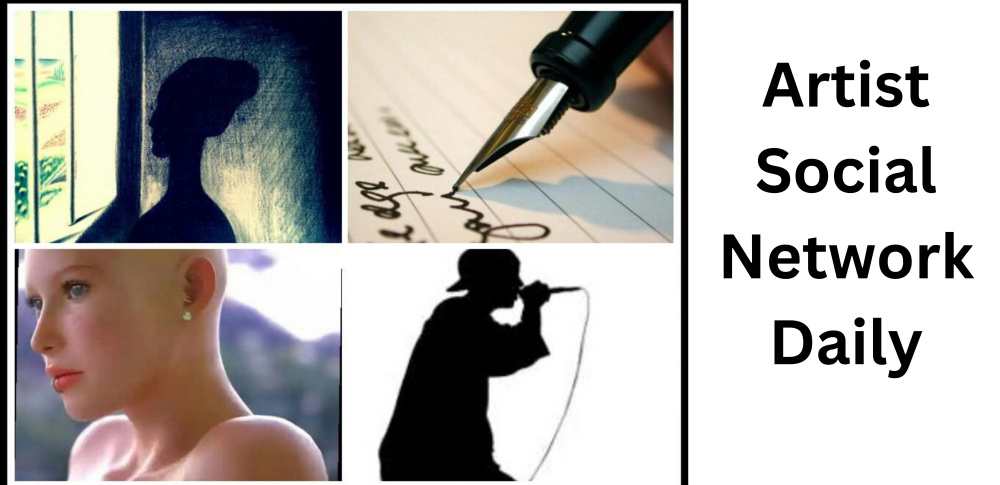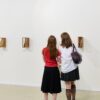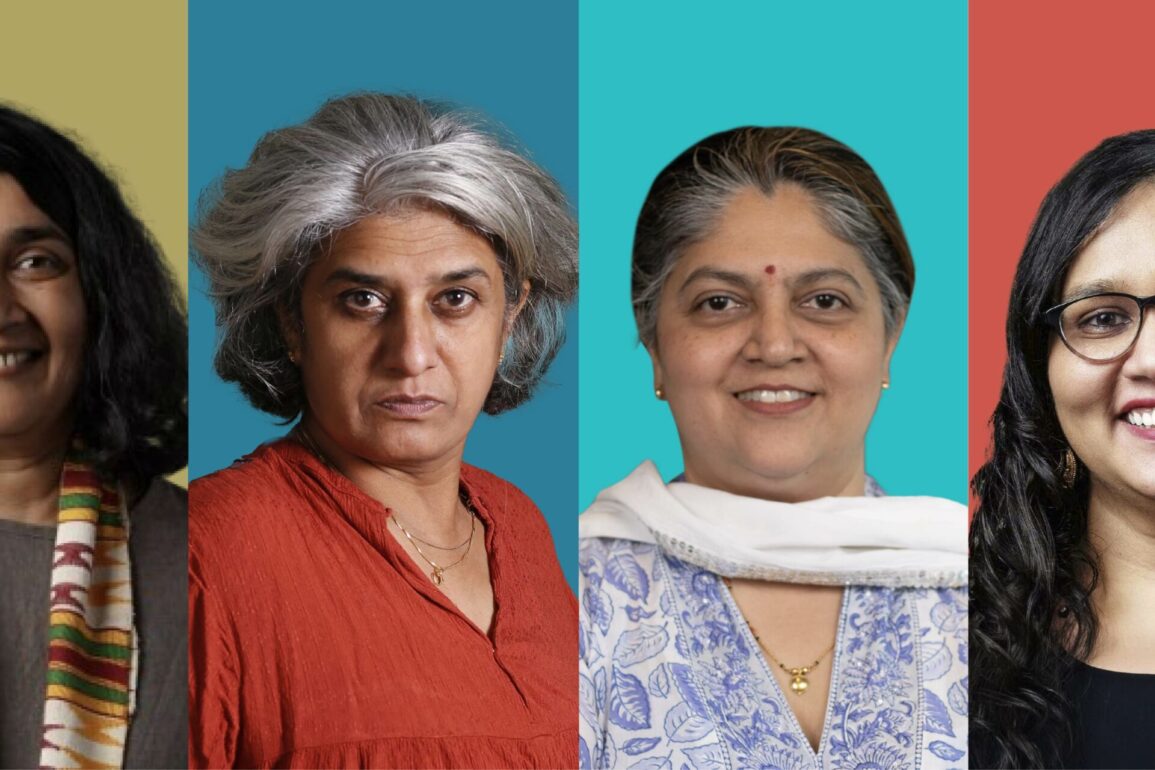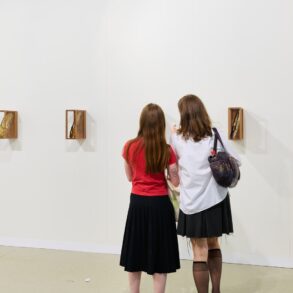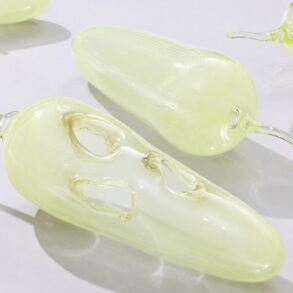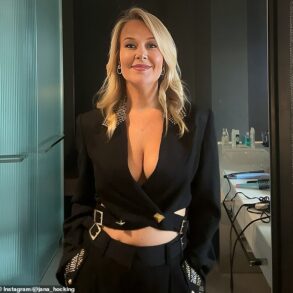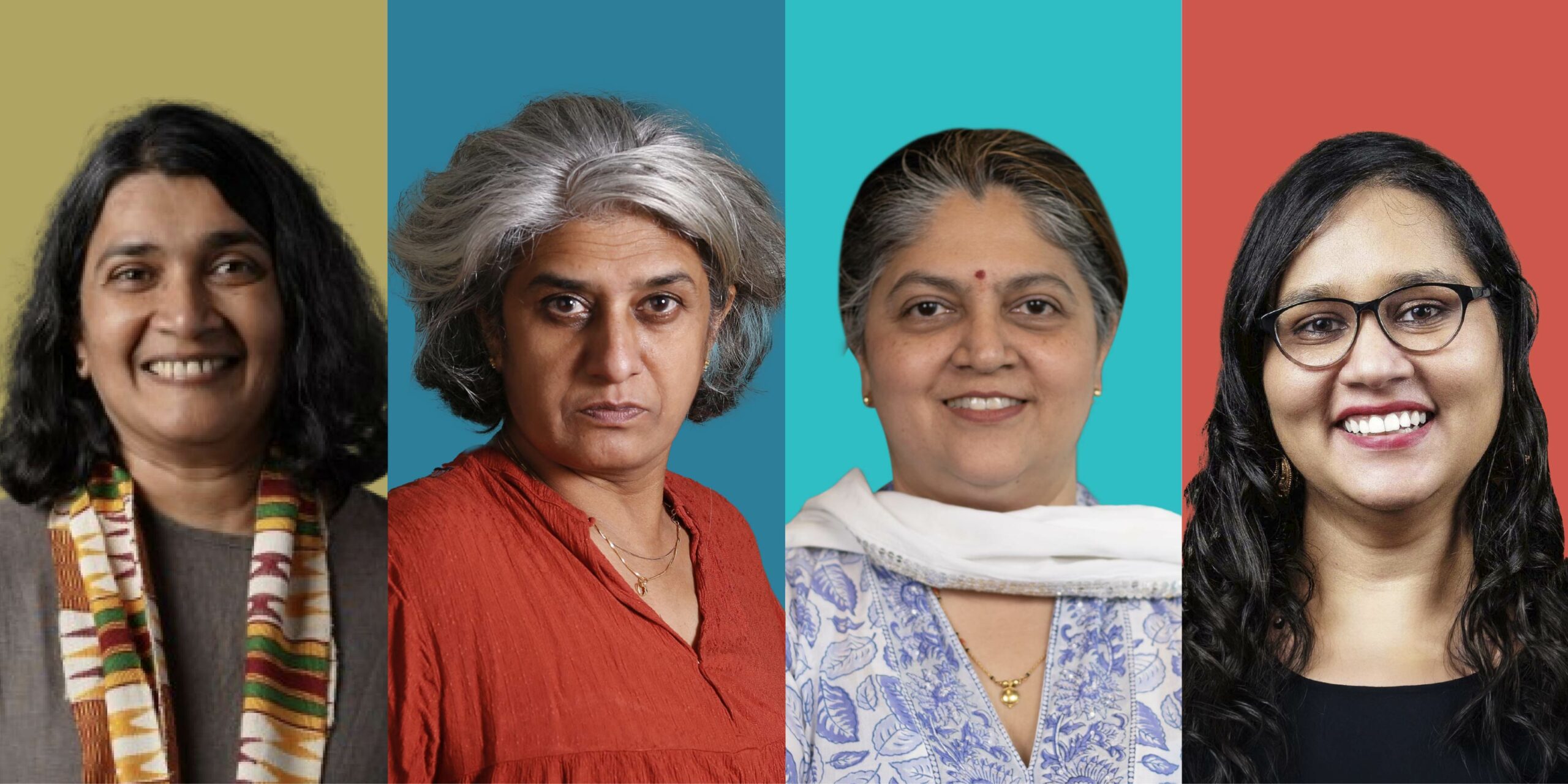
Nitika: Welcome to Woman in the Mirror. I’m Nitika Goel, CMO, Zinnov.
Today, we’re stepping away from our usual tech conversations to explore something that might surprise you – art.
Now, you might be thinking – Zinnov, talking about art? Aren’t we usually strategizing with CXOs, breaking down their problems, forecasting the next big thing in tech?
Well, here’s the thing. What’s the biggest challenge for CXOs today? It’s talent that innovates and talent that disrupts. But the fact is, disruption comes with innovation – and innovation comes with creativity.
That’s why Zinnov’s Public Spaces Initiative makes perfect sense. When people come together, ideas flow. And art? It’s one of the most powerful ways to build these connections.
We’re not talking about art being locked away in galleries, but bringing it to where life happens – transforming the spaces we move through every single day.
And the artists and curators bringing this vision to life? Each one a remarkable woman, bringing her unique perspective to public spaces.
As Frida Kahlo once said, “At the end of the day, we can endure much more than we think we can.” And like her, these artists aren’t just breaking glass ceilings – they’re painting murals on them, creating art that speaks to the heart of our communities.
In this episode, we are featuring three women working in the space of art – Yamini Telkar, Shantamani Muddaiah, and Janhvi Phalkey.
They’re not just creating – they’re challenging perceptions, shaping spaces, and pushing boundaries in a world that’s still learning to recognize the depth and impact of art.
First up, we have Yamini Telkar, the Director of the Public Spaces Initiative at Zinnov, and the former Head of the Art Program at the Bangalore International Airport.
An expert in modern and contemporary art, folk art practices in India, and the evolving art market, Yamini has spent years working with museums, institutions, and the art industry.
Born into a family of artists, her journey into art may have seemed natural. But choosing fine art, stepping into teaching, and bringing art to a wider audience – that’s a path she had to carve for herself. One that came with its own challenges.
Here’s Yamini, sharing her journey.
Yamini: My initial journey was pretty straightforward because I come from a family of artists. So, art was a natural progression – a natural decision.
I was blessed and lucky to be in a family where it was never a question of “what would you do?” Because it was always, “yes, you will be in the space of art.”
But my journey was different. While they were mostly in applied art or, you know, the realm of advertising, I chose fine art. That was a big shift, and I trained as an artist. But I think my interest was more in teaching – in kind of taking it to a larger audience. Because there’s always this mystery around it – you know, what is art?
I used to teach art history rather than technical skills because the “why” of it was always more interesting to me.
And I want people – and especially women in the field – to kind of pick up from my experience and take it forward.
So yeah, I’m looking forward to this conversation.
Nitika: If art had a Google Translate button, she would be it. Yamini doesn’t just understand art – she deciphers it, contextualizes it. Her journey has been about bridging the gap between art and its audience.
We’ve all been there – staring at a modern art piece, wondering if it’s pure genius… or upside down.
Shantamani: I am basically from Mysore, and went to do my master’s at MS University, Baroda. Then I had a little opportunity with the Charles Wallace Fellowship to be in Scotland – in Glasgow – to learn how to make paper.
That is where the transition really happened – from painting to sculpture – because I learned how to sculpt with paper. Slowly, I transitioned into much more hard and heavy materials to sculpt with.
For the last 30 years, I’ve been living in Bangalore. I’ve learned everything I know in this space. Even whatever I make as art comes from the experiences in Bangalore – and from observing how people navigate this very complexity.
I’m really looking forward to this discussion and talk.
Nitika: And that is the magic of Shantamani – taking the raw, the rugged, the overlooked, and turning it into something that demands attention. From paper to stone, tradition to modernity, and local to global – her work isn’t just about what we see, it’s about what we choose to remember.
Jahnavi: I started out in the humanities. At the age of 15, I decided to study history, economics, and politics. I graduated, in fact, with a major in civics and politics.
I think there are many things that happen – some of them are serendipitous, some of them are sort of contingent.
When I was doing my PhD, I found myself not particularly satisfied with where things were going, and an opportunity presented itself – I got admitted to a program that I actually understood fairly little about.
I got admitted with funding to Georgia Tech to do History of Science, and I thought I should give it a shot.
And today, I can say that I found the right discipline for me – because I remain excited by it even now. And it’s been 24 years since that happened, so it’s been a long time.
I followed a fairly predictable path for myself. I knew I wanted to be an academic – or as I often say, “I wanted to die a professor.”
I got an academic job and tenure at King’s College in London.
And at some point, I felt like I needed a little more excitement in my life – so I signed up for a documentary filmmaking course.
It took me a long time to finish the film. I was also working with the Science Museum in London.
And then the opportunity to set up Science Gallery Bengaluru came along. So here I am – a little over six and a half years later.
Earlier this year, we opened the doors of the gallery. But yeah… here we are.
Nitika: Jahnavi’s journey proves that sometimes, the best paths aren’t planned – they’re discovered. And as we just heard, she’s been uncovering stories one unexpected turn at a time.
Nitika: You know that scene in The Devil Wears Prada where Miranda Priestley dismantles the idea that fashion is just “stuff” by tracing the history of a simple blue sweater?
Oh no – it’s not just a blue sweater. It’s cerulean blue.
For Shantamani and Yamini, the challenge wasn’t making art – it was making people see why it matters.
From navigating skepticism to defining its value, they’ve each had to push through resistance to bring their vision to life.
So what does it take to make art that doesn’t just exist, but demands to be seen? Here’s what they had to say.
Shantamani: When we talk about art, we’re not talking about traditional practices or classical modes.
We’re talking about contemporary art.
And learning contemporary art in the ’80s wasn’t easy – especially for someone from the middle class. It was looked at with suspicion.
Contemporary art meant “modern.” And being a modern, young woman wasn’t easy at that time. I was the only woman from my side in my batch.
My struggle to claim my identity really began there.
We had a woman – Indira Gandhi – as the Prime Minister of this country, and yet we were still struggling to even go to college or make our own choices.
Sculpture is something dynamic. It challenges you – physically, mentally.
And when you create sculptures for public spaces, it becomes a very powerful way of interacting with communities.
Being out there, asserting your voice as a woman – that’s truly empowering.
Yamini: My challenge was – how do I make sense of something that feels so abstract?
How do I create a system where a non-art person can understand the logic behind it?
Because trust me – there is a logic when it comes to the commercial and transactional part of art.
Arriving at a system that made sense to non-art folks – without losing the nuance, the intricacies of the art market – that was hard.
There’s also this tendency to patronize, like, “Oh, it’s just art.” Or worse, “Anyone can do it, right? Just place a sculpture, what’s the big deal?”
The work that goes into it – the conceptualization, the sensitivity behind why you place a piece in a particular space – all of that gets overlooked.
It was difficult to convince people, especially senior management, why placement mattered. They’d say, “So what if it doesn’t fit? Just put it there.” To them, it was just a decorative element – and that bothers me no end.
Because when you bring art into a project, you’re not just trying to make it look good.
You’re trying to make a difference.
There’s this vague belief that art can make a difference – but no clarity on what that difference is.
And people often dismiss it as superficial, not realizing the deep impact it can have on someone’s psychology or everyday experience.
And that impact… is often ignored.
Jahnavi: I’ve walked away from things – not without agony, not without pain. But I have walked away.
Giving up, to me, is when a situation gets tough and demands more of you – and you decide not to give it.
Walking away, though, is different.
It’s when you realize: this goal isn’t working for me. This project isn’t serving me.
I want something smaller, or bigger, or more nourishing, or more exciting – whatever it may be.
And that’s when you say: it’s time to walk away.
Because any more investment here isn’t going to give me what I need.
Nitika: So art isn’t just about making something beautiful.
It’s about making people see what they’d rather ignore.
And as we’ve just heard – that’s not always easy.
Nitika: All day, every day — therapist, mother, mentor.
But when it comes to the heavy lifting — literally and figuratively — there’s often a polite nudge to step aside.
In the art world, that often means being told where to stand while someone else takes over.
But as we’ve seen, artists don’t just create — they challenge, they push, they carve out space where there wasn’t any.
And lately, that space is being shaped by a whole new set of hands.
Let’s talk about what’s changing — and what still gets in the way.
Jahnavi: We still have a way to go.
It’s not easy — in the workplace — for both men and women to accept a woman leader as easily as we accept a male leader. And there’s no doubt about that. If that weren’t the case, things would look different.
In India, we still have some distance to travel — to normalize leadership by women.
Shantamani: If you’re lifting something like 200 or 500 kilos, they’ll always say, “Ma’am, you come this side, stand here. We’ll handle it.”
And my response is — I’ll lift what I can lift. You lift what you can. Don’t ask me to step aside. This is my work.
It’s something I’ve had to constantly battle when working physically — always with a group of men. But now, I’m seeing something fantastic.
The people leading in the art world today — they’re dynamic women. I read about them — bold, pathbreaking, brave — and it’s amazing.
Right now, in India, we’re experiencing something different. Women are taking the lead — and it’s fantastic to work alongside them.
Nitika: Whether it’s Shantamani pushing back against being told to step aside, Jhanavi questioning how leadership is perceived, or Yamini navigating the egos and expectations of the art world — one thing is clear:
Making art is hard.But making space for yourself in the art world? Even harder.
That said — things are starting to change.
We all know the challenges — being sidelined, second-guessed, or expected to quietly go along. So how do you deal with it?
Do you fight? Do you walk away? Do you play the long game?
For our guests, there’s no single playbook. Just instinct, strategy — and a little bit of humor.
Yamini: My simple mantra? Take a deep breath, let go.
It has come in handy so many times.
Because it’s the world of art — full of creative people, big egos, strong identities.
Even the so-called business side is filled with that energy.
So I always have to be the sane one in the room.
To navigate all of it and still get something done — because I believe I’m the bridge.
I see both ends. And if I want to make things happen, I have to hold it all together.
Jahnavi: It depends on the moment. It depends on what’s at stake.
If the stakes are small, I don’t stress too much. I just let the work speak for itself. People figure it out eventually.
But if the stakes are high — and you need to get something done — then I dig my heels in.
You can call it persistence, determination… or just plain stubbornness. Sometimes, you use humor.
Recently, I had this exchange with my husband — everyone around me kept saying, “Let me know if I can help you.” Senior folks, junior folks, all with the same offer: Let me know if I can help you.
And at some point, I just said, “Do I look helpless to you?” And my husband replied, “Maybe not helpless… but you could say, you can’t be helped.”
I laughed my heart out. And that’s his way of reminding me — try some humor. It might just help you work your way through.
It’s not always easy to muster the lightness required to laugh —But when I can, it helps.
Nitika: The corporate world is known to be cutthroat – but if there’s one thing I’ve learned about the art world, it’s that it isn’t for the faint of heart either.
Making a career in art takes more than talent. It takes survival skills.
But here’s the thing – no one does it alone.
Behind every artist pushing boundaries is a community – of mentors, peers, and supporters – who lift each other up.
Shantamani: Pursuing a career in art is very difficult. There’s no real economy around it – and only recently has the market opened up.
If you’re making the kind of art the public wants, that’s one thing. But if you want to push boundaries, be experimental – it gets even harder. Thankfully, I wasn’t isolated.
There were many like us. Our community is small – and we all know each other.
There’s a real sense of camaraderie.
And there are a lot of women artists in India – dynamic, powerful women. That energy, that presence – it really helped me continue. They’ve taught me so much.
It wasn’t just emotional support – though that was part of it. Sometimes, it was even financial support.
These women changed the course of my life.
As a woman looking for my own voice – that support was everything.
Nitika: As a leader, I’ve learned that vulnerability isn’t a flaw – it’s what builds trust.
When I admit I don’t have all the answers, it creates space for real conversations.
When I share my struggles, it encourages others to do the same.
And in the world of art, where everything you create is deeply personal, that kind of openness isn’t just important – it’s essential.
For Shantamani, Yamini, and Jhanavi, vulnerability isn’t a weakness.
It’s a source of strength, mentorship, and leadership.
Here’s what happens when you stop seeing emotion as a disadvantage – and start using it to build something bigger.
Jahnavi: I express it with my team regularly. They know my vulnerabilities – and I’m not embarrassed by them.
Sure, it has come back to bite me sometimes, depending on where and how I’ve expressed it.
But still – I’m not ashamed of my vulnerability.
Shantamani: Art is deeply emotional.
And even the men who enter this space – they have to develop that sensibility.
Maybe it comes more naturally to us – and they have to learn it.
So are we at a disadvantage? Yes.
We go through that phase – being labeled “too emotional” or worse, “hysterical.”
But we know where that comes from.
We understand the structure behind those stereotypes. I’m not willing to succumb to it.
I have valid reasons to be a woman – to be all of that. And I’m okay with it.
I’ll put it out there, in the public space, and explore what kind of discourse it sparks.
I have no hesitation in being a woman – at any point in time.
Yamini: I think it’s important to be vulnerable.
Because that’s what allows you to see things differently – to build a network of people who support you.
That has helped me – especially when I’ve been in tough spots.
I’ve said, “Okay, this is it,” and I’ve owned it.
And I cherish that.
Nitika: For our guests today, being vulnerable – being truly themselves – is what shaped their art and the communities around them.
Because in the end, the strongest voices aren’t always the loudest. They’re the ones unafraid to be real.
Nitika: All right, we’ve had deep conversations and big reflections – but now, it’s time to shake things up a little.
We’ve talked about the big stuff – career, challenges, art, leadership.
But what about the little things?
The moments that make our guests laugh, the advice they’d give their younger selves – or even their future selves.
This is our rapid overthinking session. Just quick answers. Let’s see what comes out.
Nitika: What’s your go-to music when you’re sculpting? Or do you listen to music at all?
Shantamani: I listen to a lot of Indian classical music – T. M. Krishna is someone I love.
I also listen to Malian music, which really appeals to me. And sometimes, I even listen to throat singing.
Nitika: Love that range! Okay – one word to describe your professional journey?
Yamini: That one word would be… patience, perseverance, and control.
Okay – that’s three. I couldn’t pick just one.
Nitika: We’ll allow it. Jahnavi, one word to describe your leadership style?
Jahnavi: Mentorship. Helping people recognize their strengths and their voices.
If others want to do what Science Gallery Bengaluru is doing – that’s when I know we’ve succeeded.
Nitika: If you looked at yourself in the mirror and had to give your 20-year-old self one piece of advice, what would it be?
Jahnavi: Worry less.
Yamini: Be a little bolder. Put yourself out there.
Shantamani: Don’t be so scared or worried. Be confident. Trust yourself.
Nitika: And what would you tell the woman you are today?
Jahnavi: I would say – rest a little more.
Yamini: Take on the world. Don’t hold back.
Shantamani: There’s still a long way to go – and you can still make a difference.
Nitika: And finally – if you could say something to your future self, 20 years from now, what would it be?
Jahnavi: My future self? Wait for me.
Yamini: Stick to your vision. Push through. Break all the barriers – and make that dream of building an art institute come true. It will happen.
Shantamani: Don’t give up. Don’t stop just because the system says to.
Nitika: And just like that, we’ve come to the end of this conversation.
But let’s be honest – we could have gone on for hours.
A huge thank you to Shantamani, Yamini, and Jahnavi – for keeping it real, for sharing not just their art, but the stories, struggles, and unexpected moments that truly shaped them.
If there’s one thing I’m taking away from this, it’s that art isn’t just about making something – it’s about figuring out how to make it work.
The rules aren’t always clear. The path isn’t always easy. But somehow, you just keep going.
And if you ever find yourself stuck – ask for help. Laugh at the chaos.
And remind yourself: some of the best things in life make no sense at all… at first.
Nitika: As we wrap up this season of Woman in the Mirror, I’m struck by the remarkable journeys we’ve shared.
From healthcare to BFSI, software to retail – every conversation with these 20 incredible women revealed something powerful. We’ve learned that true strength lies in embracing vulnerability. That falling is just part of rising higher. And that success is never a solo journey – it’s built on self-belief, and a community that lifts you up.
I’m Nitika, signing off for this season of Woman in the Mirror. Thank you for being part of these inspiring conversations.
Stay tuned for Season Two – where we meet more extraordinary women, with even more stories to tell.
This post was originally published on this site be sure to check out more of their content
